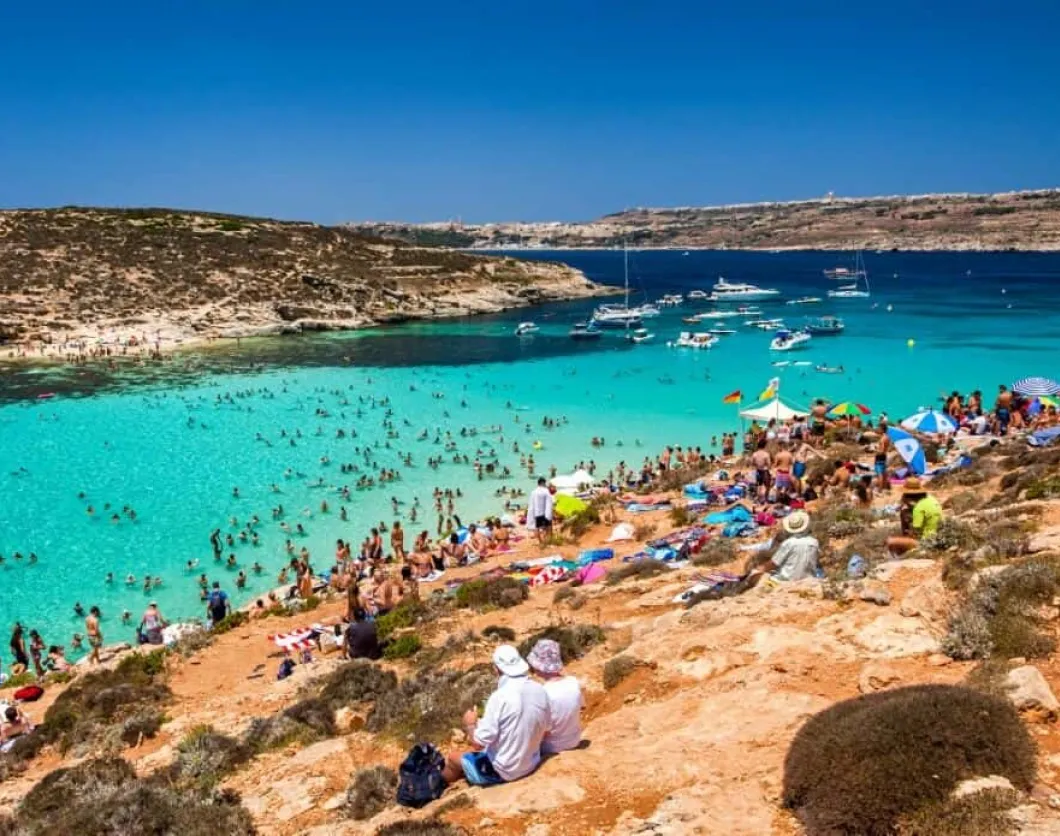
Overtourism is causing problems in popular destinations, but cities proactively implement measures to address this issue, reassuring residents and visitors alike. Authorities in various regions, including Europe and Asia, have introduced restrictions on vacation rentals, limited the number of daily visitors, restricted access to iconic landmarks, and imposed tourist taxes. Approximately 140 cities across Europe charge some form of tax to visitors.
Amsterdam
Amsterdam, known for its history and vibrant nightlife, has implemented measures to control the number of tourists and the growth of the hotel industry. The city has decided to limit the construction of new hotels in most districts, allowing a new hotel to be built only if another one closes. Additionally, there is a cap on annual overnight stays, with additional measures being activated if the number exceeds 20 million.
In early 2018, the city restricted vacation rental stays offered by platforms like Airbnb, setting a 60-day limit on renting homes to visitors. Recently, there has been a proposal to ban cruise ships and close the main terminal to reduce the influx of tourists and fight against pollution. Despite these measures, Amsterdam broke a new record in 2023 with 20.6 million overnight stays by tourists, excluding holiday rentals, bed and breakfast, and cruise nights, according to the city council.

Venice
Venice, one of the world's most popular destinations, is taking steps to control overtourism and preserve its historical heritage. To reduce crowding in its narrow streets and canals, the city has banned tours of groups of more than 25 people. Guides are also prohibited from using loudspeakers, which can inconvenience residents and other visitors.
In April, the city introduced a 5 euro entrance fee for day tourists who do not stay overnight. This fee is in a trial phase and is applied on specific dates of high influx. In the first eight days, the authorities collected 723,000 euros, exceeding the expected collection for the first three months, indicating that the objective of reducing tickets was not met.
Furthermore, Venice has banned large cruise ships from anchoring in its historic center since 2021. To prevent the entry of these ships, vessels of more than 25,000 tonnes, with dimensions greater than 180 meters in length, 35 meters in height, and emitting more than 0.1% of sulfur in their emissions are not allowed. Unesco even threatened to include Venice in its list of cities in danger if the docking of these ships was not prohibited.
Croatia
Like Venice, UNESCO has also issued a warning to Dubrovnik, Croatia. The warning stated that Dubrovnik could lose its World Heritage status due to the many tourists who degrade the old town with their passage. In response, the city council decided in 2018 to restrict the number of cruise ships that can dock at the port. Only two ships are allowed daily, with a maximum of 5,000 visitors daily.
Last year, local authorities began implementing measures under the slogan "Respect the City" to achieve more sustainable tourism development. The plan has reduced the number of souvenir stalls by 80% and the number of restaurant tables in the old town by 30%. Additionally, a maximum limit of eight people per local guide has been imposed on tours dedicated to the settings of the Game of Thrones series, which have further popularized Dubrovnik.
Another innovative measure is the prohibition of the transit of wheeled luggage in certain tourist spots in the historic center. The noise these suitcases produce when rolling through the cobbled streets has been considered unbearable for the neighbors and contributes to pavement deterioration. Likewise, climbing the monuments and walking shirtless through the old part of the city is also prohibited.
Spain
In Spain, only six provinces of two autonomous communities have implemented the so-called 'ecotax': Barcelona, Girona, Tarragona, Ibiza, Menorca and Mallorca. However, this measure does not deter tourists, as almost four million visitors arrived in the Balearic Islands and over seven million in Catalonia until May.
The tourist tax became effective in 2012 in Catalonia. Its cost varies depending on the accommodation category and location, ranging from 60 cents to 5 euros per night per person. In the Balearic Islands, it was introduced in 2016, and the amount to be paid depends on the season and the type of accommodation, ranging from 1 to 4 euros per night per person.
Greece
Multiple destinations in Greece are facing issues caused by overtourism, leading local authorities to limit the influx of tourists to protect the local population and the natural environment. Two major destinations that have implemented such measures are Santorini and Athens.
Santorini, renowned for its breathtaking landscapes and sunsets, has been struggling with excessive visitors each year. As a result, the island has restricted the number of cruise passengers allowed to reach its ports. In 2019, it was decided that only 8,000 tourists per day would be permitted to access the island. Despite this, the number of foreign visitors has remained steady. In 2023, over 800 cruise ships docked, bringing in more than a million people, which was 20% higher than the previous year, as reported by Greek authorities.
In Athens, a maximum of 20,000 visitors per day was imposed for accessing the Acropolis last year. Additionally, variable hourly entry limits were implemented to manage crowds at the archaeological site at different times of the day.
New York
Since September 2023, New York has implemented restrictions on vacation rentals through platforms such as Airbnb to relieve the stress on housing caused by tourism. However, this move has had some negative consequences: hotel prices have soared. Despite the price hike, the city welcomed 61.8 million tourists in 2023, a 93% recovery compared to pre-pandemic levels.
The city's regulations aim to regulate short-term rentals and prohibit the renting of apartments for less than 30 days unless the owners are present. Short stays are allowed if the owner is on the property and there are at most two visitors.
These regulations were implemented when New York had to convert more than 10,000 hotel rooms into migrant shelters. This, along with other factors, has caused a surge in hotel demand, leading to increased rates and the displacement of tourists to nearby areas.
Germany
In Germany, several cities have adjusted their regulations on tourist rentals to balance the demand for affordable housing for residents. Berlin, Munich, and Stuttgart have implemented measures to address this issue.
In Berlin, the ban on using Airbnb was lifted in 2018 under strict rules. Hosts wishing to rent out an entire property on a short-term basis must obtain a permit, and second homes can be rented for a maximum of 90 days a year.
In Munich, short-term rentals of homes are limited to eight weeks per year. Hosts must obtain a permit for rentals beyond this period. The city has also removed tour buses from historic centers and created incentives to encourage accommodation in less popular neighborhoods.
In Stuttgart, hosts can rent out more than half of their property in the short term without needing a permit, but only for ten weeks per year. This restriction aims to balance the supply of tourist rentals with the availability of permanent housing for residents.
Japan
Japan has been at the forefront of implementing strict measures to manage tourism and mitigate its negative impacts. In 2018, it removed almost all Airbnb listings that did not comply with a law requiring owners to be registered with Japanese authorities. Within a few days, the website went from having 62,000 ads to 13,800.
In Shibuya, a trendy neighborhood in Tokyo, nightlife has been restricted due to noise and bad behavior by some tourists and young people. Meanwhile, Japanese islands, especially remote ones in Okinawa Prefecture, have imposed an entry tax on travelers to manage the influx better and protect resources.
In Fujikawaguchiko, a central city in Japan, tarpaulins and barriers have been installed to block a photogenic view of Mount Fuji. This measure prevented tourists from crowding the area, as they obstructed traffic and caused security problems.
In Kyoto, the Gion neighborhood has banned access to certain streets due to tourist harassment of geisha and maikos (geisha apprentices). Excessive congestion in this historic area led the neighborhood association to restrict the entry of visitors, with the warning of fines of up to 10,000 yen (about 58 euros).
Despite these measures, tourism in Japan has exceeded its figures, with 25 million tourists visiting last year, reaching 80% of its pre-pandemic record in 2019, the year that saw the highest number of tourists traveling to Japan.










